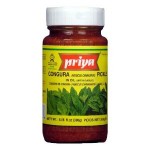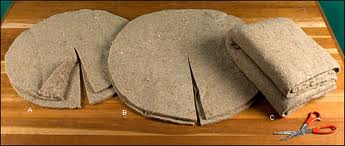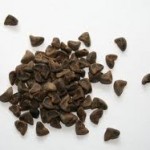
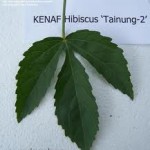
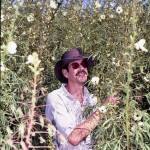 KENAF (Hibiscus Cannabinus)
KENAF (Hibiscus Cannabinus) 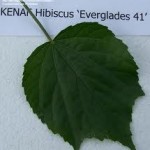
By Eddie Katz
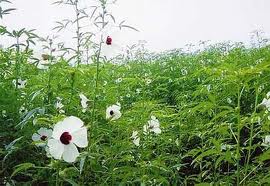
A cellulose fiber plant dating 4,000 years back with historical roots in North East Africa. Kenaf has a botanical relationship with cotton, okra and hemp; a member of the hibiscus family.
There are several varieties of Kenaf (broad and palmate- segmented like hemp) and has been studied since the 1930’s at the University of Mississippi. Tender young leaves are used as alternative forage for livestock and food eaten by Africans, East Indians and Asians for 1,000 + years. In Pakistan it is called “Gongoora”. As food, for example, it is a great salad addition (green leafy texture like spinach with a citrus flavor). Nutritionally potent with high levels of calcium, selenium, protein, omega fatty acids, nitrogen, etc.
Kenaf is totally ea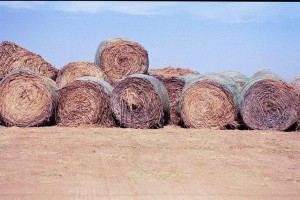 rth-friendly. All you need is water and fertilizer to grow as high as 20 feet in about 150 days. Having no natural predators, growing Kenaf nourishes the soil and cleans the air. The flowers are pretty yellow-white blooms with a deep red center that opens at sunrise and closes at night. Harvesting Kenaf three times during the growing season (to 5 feet) produces tender young leaf for highest nutrition (wet or dry). Food for humans–forage for livestock.Growing Kenaf for the rest of the season yields stock and core material that can be made into paper and textile products, animal bedding, soil remediation (pollution buster–water, land and air). Highest organic oil absorbancy to a 92% clean up, starting as soon as you apply it. One pound of Kenaf absorbs 1.66 gallons of oil or over 11 pounds of oil. Amazingly absorbs hydrocarbon products up to 12 times its own weight. Environmentally safe and correct. A great alternative to plywood (save the old growth trees). For the garden it’s a great mulch.
rth-friendly. All you need is water and fertilizer to grow as high as 20 feet in about 150 days. Having no natural predators, growing Kenaf nourishes the soil and cleans the air. The flowers are pretty yellow-white blooms with a deep red center that opens at sunrise and closes at night. Harvesting Kenaf three times during the growing season (to 5 feet) produces tender young leaf for highest nutrition (wet or dry). Food for humans–forage for livestock.Growing Kenaf for the rest of the season yields stock and core material that can be made into paper and textile products, animal bedding, soil remediation (pollution buster–water, land and air). Highest organic oil absorbancy to a 92% clean up, starting as soon as you apply it. One pound of Kenaf absorbs 1.66 gallons of oil or over 11 pounds of oil. Amazingly absorbs hydrocarbon products up to 12 times its own weight. Environmentally safe and correct. A great alternative to plywood (save the old growth trees). For the garden it’s a great mulch.
Much can be said! Food,Clothing, Building Material( Plywood, Brick, Plastics) Cleans the Soil,Water and Air. A remedy that we should act on now. Proven environmentally correct, one that should be used to make paper without killing trees and it doesn’t need insecticides or fungicides. There’s no need for importing from out-of-state any type of sawdust (substrate), bedding for livestock, mulch for gardens. EPA approved for 20 years. Bioremediation (clean up method converting contaminants such as creosote preservatives, PCP-pentachlorophenol, petroleum products into harmless byproducts, i.e. carbon dioxide and water. Kenaf contains indigenous hydrocarbons digesting microbes without any cultures, preservatives or stablizers. We can balance our pollution problem right here, right now! Use Kenaf everywhere.
OIL SUCK: Just a 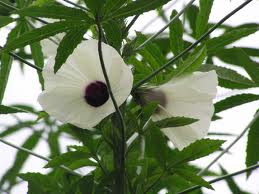 little sucks a lot. Kenaf manufactured locally by American farmers, is all natural and biodegradable. Kenaf absorbs up to 12 times its own weight. Kenaf
little sucks a lot. Kenaf manufactured locally by American farmers, is all natural and biodegradable. Kenaf absorbs up to 12 times its own weight. Kenaf 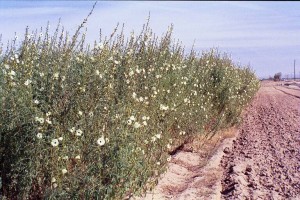 assimilates pollution. Kenaf is a remedy for balancing pollution from industrial, military and lakes. Store 2-5 pound bags of Kenaf in cars, boats and trucks. Helps keep available proven clean up materials close by. Do your part–clean the ground and water. It will help clean our air, an incentive to reduce greenhouse effects. Need Seeds? Inquire about a Kenaf Presentation. Contact us at WellnessWillpower.
assimilates pollution. Kenaf is a remedy for balancing pollution from industrial, military and lakes. Store 2-5 pound bags of Kenaf in cars, boats and trucks. Helps keep available proven clean up materials close by. Do your part–clean the ground and water. It will help clean our air, an incentive to reduce greenhouse effects. Need Seeds? Inquire about a Kenaf Presentation. Contact us at WellnessWillpower.
Future Green Industries
Personal use
- Food (leaves raw or cooked) for Humans and livestock
- Dehydrated — freeze-dried — juiced — pickled (picture of pickled Kenaf in oil and garlic)
- High in nitrogen, protein, calcium, selenium, omegas
- Seeds yield nutritious food grade oil
Agricultural benefits
- Soil remediation – biodegradable (can be disposed in compost)
- Absorbs oil 12 times it’s own weight
- Highest organic oil absorbency tested by the us navy
- Nourishes the soil – soil less potting mix
- Landfills/ restore environmental balance
- Store 2-5 lb. Bags of fine dust in cars, boats, trucks
- Kenaf Cleans the air as it grows (more co2 absorption)
Industrial applications 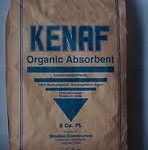
- Building materials that are environmentally safe
- Paper 100% free of tree and chlorine
- Pulp — Pellets
- Particleboard — Composites
- Lost circulation media/Oil well mud mixed with kenaf fiber
- Pavers — Block
- Grass erosion mats –- Seeded mats — Mats for roads of the future
- Thermo Plastic extender (bio-degradable plastics) — auto industry
- Soil Neutralizer — landfills, farms, beaches
- Filter Applications –- water treatment plants (pools, water and air)
- Oil — Bio-fuel -– industrial lubricants -– cosmetics
- Containment booms –- absorptive booms -– absorptive blankets
- Insulation material –- non toxic
Textiles
- Clothing
- Jute (java jute) Indonesia – Burlap North America
- Cordage
- Upholstery
- Canvas – sails
Animal Bedding 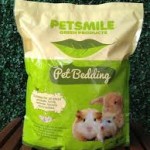
- Alternative to sawdust (premium grade) no need to import
- Many times more absorbent than wood shavings
- Animal litter – low dust – non toxic
- Preferred for reptiles and horses with allergy problems
KENAF
Facts
1. History: Indigenous of southern Asia, Africa, Middle East.
2. Age: Cultivated for at least 4000 years – originating in Egypt.
3. Yield: Kenaf may yield 6 to 10 tons of dry fiber per acre. Per year. This is 3 to 5 times greater than the yield for pine, which requires 7 to 40 years before they are ready for harvest. 5000 acres produce pulp to supply paper plant 200 tons a day.
4. Fiber: The outer fiber or bast makes up 40% of the stalks dry weight; the inner fiber or core makes up the other 60%.
5. Processing: Can be processed in a mechanical fiber separator similar to a cotton gin.
6. Growth: In the right climate, kenaf grows 14 feet tall in 4 to 5 months and is an annual. Environmentally safe.
7. Harvesting: Harvesting kenaf 3 times during the growing season (to 5 feet) produces tender young leaf for highest nutrition (wet or dry).
8. Flowers: Kenaf flowers at the end of the growing season, producing showy hibiscus-like blossoms.
9. Requirements: Requires a minimum of fertilizers, pesticides, and water in comparison to other row crops.
10. Growing areas: Almost all growing areas of U.S. kenaf, seed cannot mature. You need 60 to 90 days frost free to germinate. Arizona and southwest deserts can produce mature seed.
11. Seeds: 15,000 to 20,000 seeds per pound. Varieties include; Everglades41, Dowling, Whitten, tainung2, all have broad shape leaf, tainung2 has both palmate and broad shape leaf. Seed Price range: $8.50 for 240+, advance order: $2.80/lb. Minimum order 2000 lbs. (Kenaf.seed.com)
12. Absorption: Cleans the air 3 to 9 times more than other plants in Co2 Absorption. Absorbs oil up to 12 times its own weight. Neutralizes oil toxicity up to 92%.
S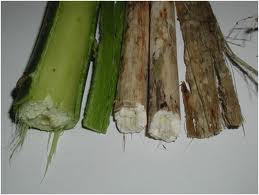 ummary: America has studied kenaf enough for 80 years. I have been knocking on heads to start businesses for 12 years now!
ummary: America has studied kenaf enough for 80 years. I have been knocking on heads to start businesses for 12 years now!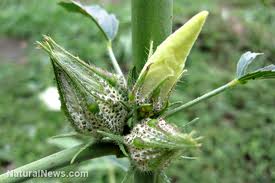
Better than any Sponge- Absorbs 12 times its own weight- Oil Spills are happening Now. Its time to get this green industry on line now!
By Eddie Katz
Back to top
Kenaf Industries.Com
